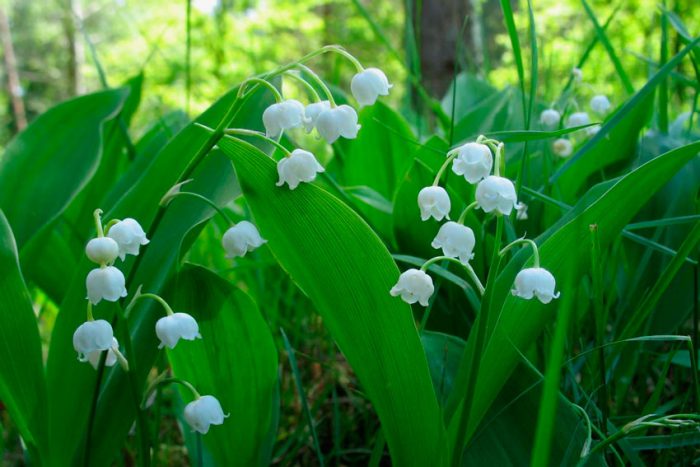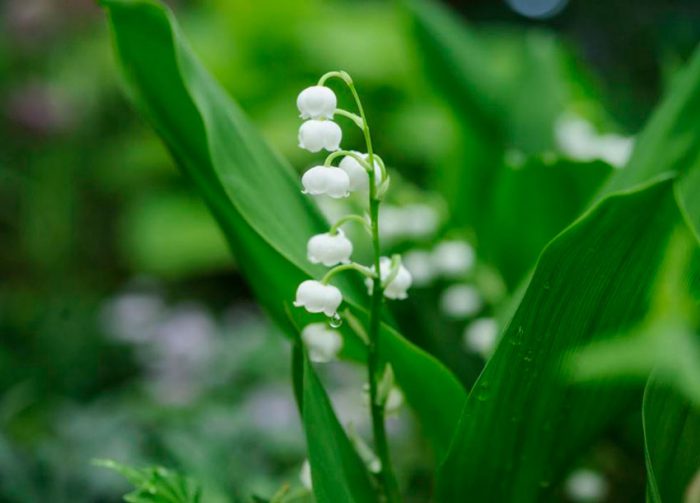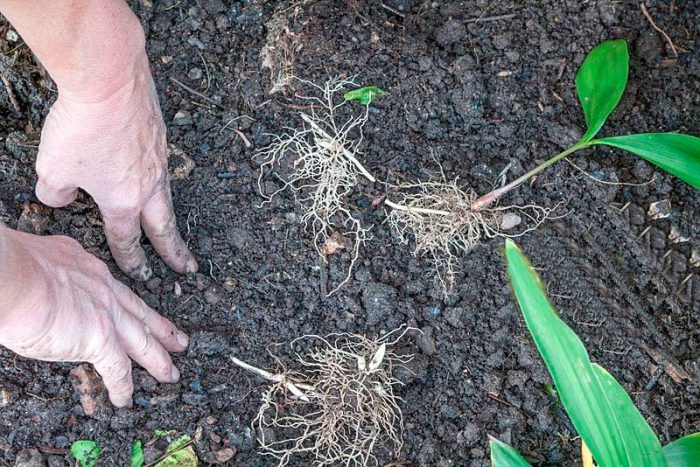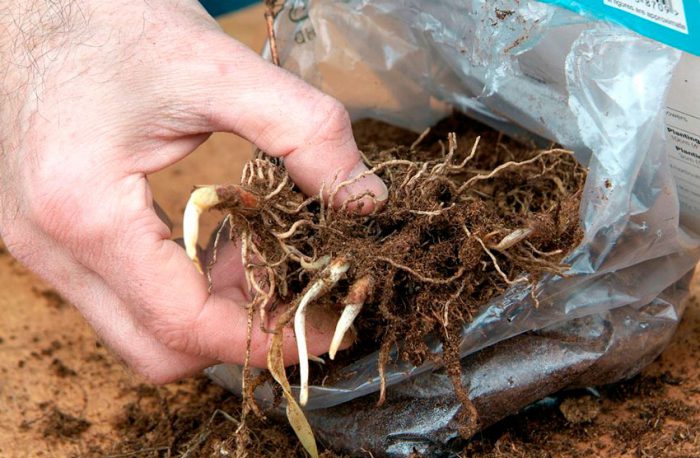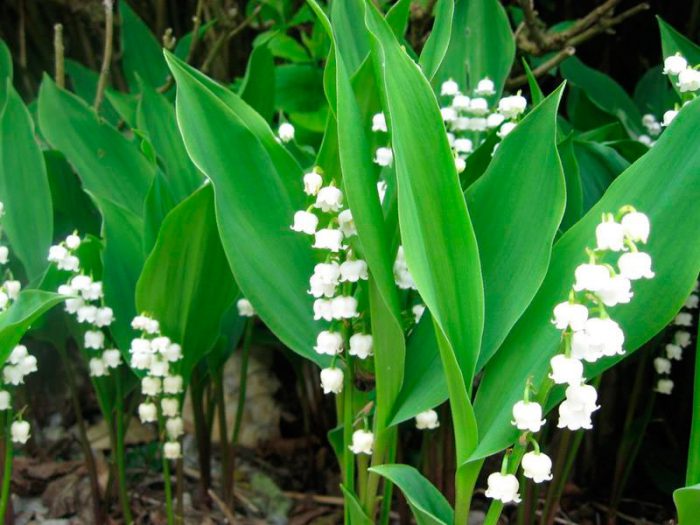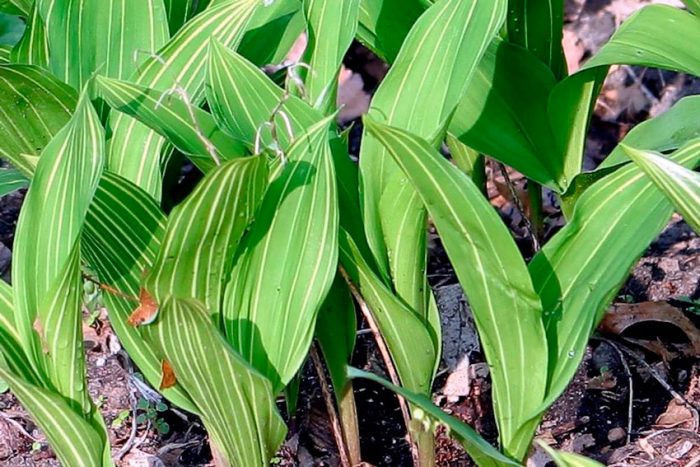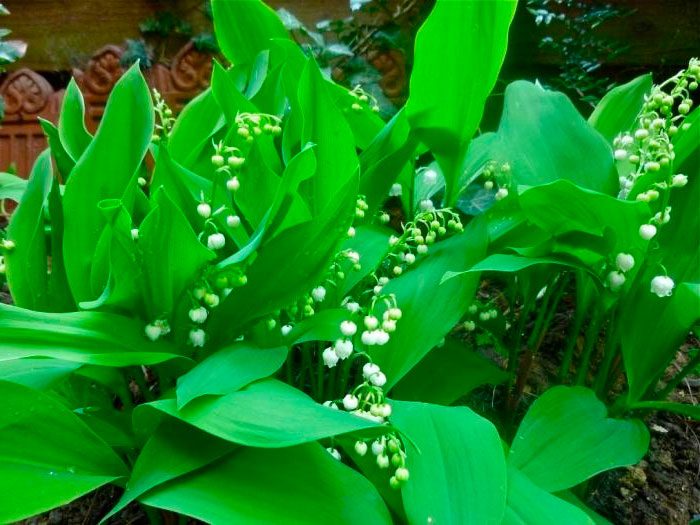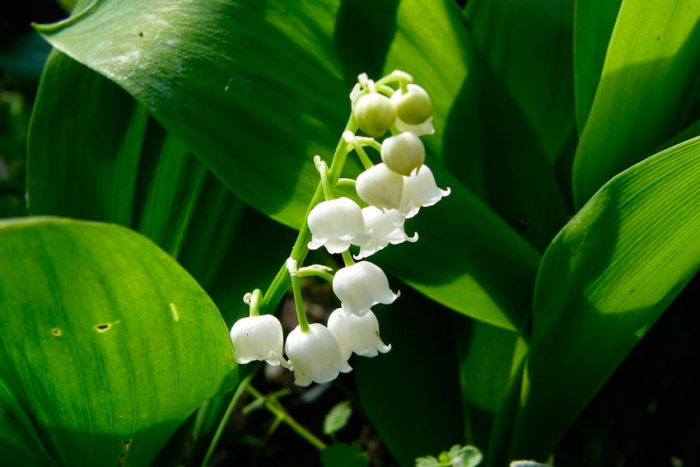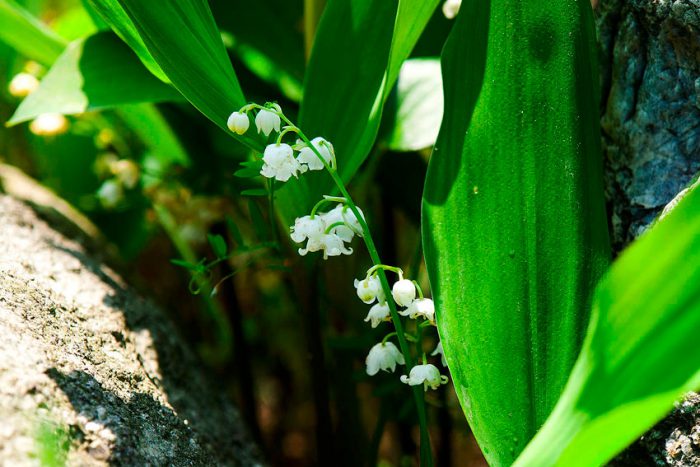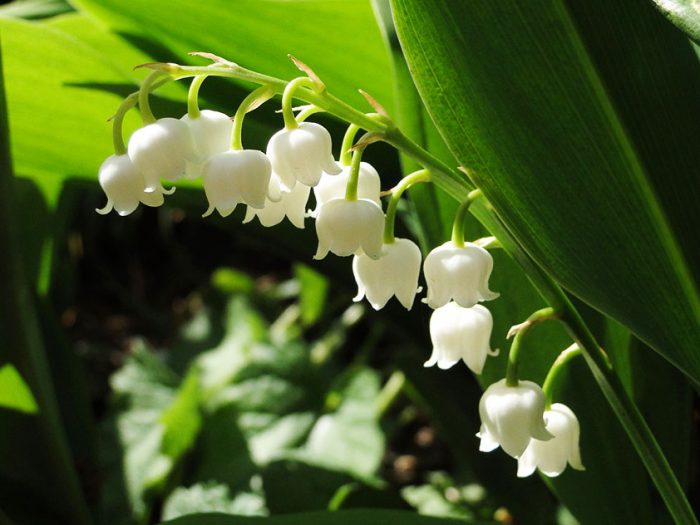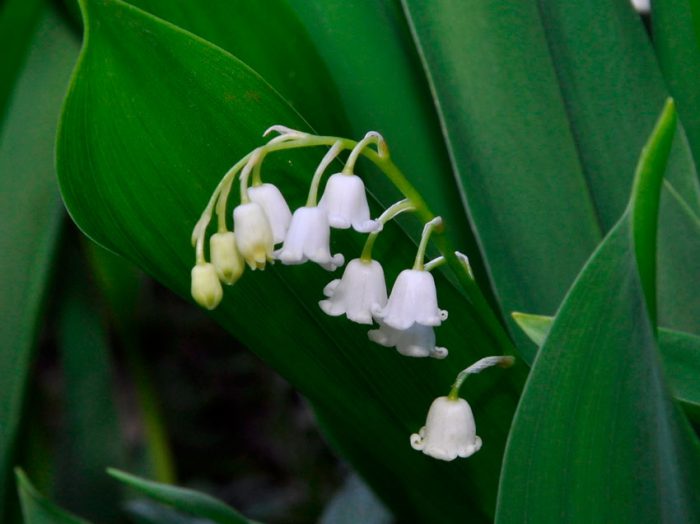Lily of the valley (Convallaria) is an oligotypic or monotypic (which includes a small number of species) genus, which belongs to the asparagus family. More recently, this genus was part of the lily family, and it was also isolated into a separate lily of the valley family. Karl Linnaeus gave this flower the Latin name Lilium convallium, which means "lily of the valleys". It is assumed that the name "lily of the valley" came to Russia from the Polish language, and this plant is also called a young man, a shirt, a young man, a culprit. Under natural conditions, such a flower can be found in Asia, Europe and North America, and it prefers to grow in floodplain oak forests, as well as in pine, mixed or deciduous forests. This plant has been cultivated since the 16th century. There are French cities where the lily of the valley festival is held on the first Sunday in May. This plant has medicinal properties that are used in both traditional and alternative medicine. This plant is also widely used in the perfumery industry.
Content
Lily of the valley features
Lily of the valley blooms in May and June and lasts for about half a month. Bushes are low, about 20-25 centimeters. The creeping rhizome is quite thin, and a large number of roots have a fibrous structure. The leaf plates will grow from 1 to 3. They are broad-lanceolate and have an oblong-oval shape, until the last days of July they retain a rich green color, after which they turn yellow and die off. The peduncle grows from a flower bud, in the upper part it has a triangular cross-section. And the peduncle is twisted in a spiral. Fragrant snow-white flowers are part of the racemose inflorescence of 8–12 pieces. The flowers look like small bells, which are 0.5 cm wide and 0.4 cm long, as well as short stamens. When the flowering begins to end, the inflorescence will turn dark and an ovary is formed, which is a three-chambered berry. Inside such fruits, there are from 3 to 6 seeds. The seeds, like other parts of the lily of the valley, contain poison.
Growing lily of the valley in the garden
Lilies of the valley are shade-loving plants, and they are listed in the Red Book. Not only snow-white flowers are very effective, but also dark green rather wide leaves.This flower is recommended to be planted next to lungwort, anemone, ferns and aquilegia. Lilies of the valley are distinguished by their rapid growth, and they are able to displace other plants from the site. By the same token, they stand out in prefabricated bouquets, the fact is that any other flowers in the vicinity of lilies of the valley rapidly wither. Remember, the poison is in all parts of the lily of the valley, so you need to work with it very carefully.
Planting lilies of the valley and care in the garden
What time to plant
Planting lilies of the valley in open soil should be done in the autumn, namely, from the first days of September to November. It is recommended to plant them under shrubs or trees, as they feel best in a shaded place where moisture from the soil does not evaporate so quickly. However, when choosing a place for planting lilies of the valley, it should be borne in mind that they still need sunlight, since without it flowering will not begin. And you should also remember that such plants must be protected from strong gusts of wind. A suitable substrate should be moist, organic, neutral or slightly acidic. If the soil is excessively acidic, then in order to fix this, it is necessary to add 200 to 300 grams of lime, 10 kilograms of peat compost or humus, and fertilizers: 40 grams of sulphate under a deep (about 0.3 m) digging per 1 square meter potassium and 100 grams of superphosphate. Moreover, the preparation of the soil should be done in advance. So, if the planting of lilies of the valley will take place in the autumn, then the site should be prepared for them in the spring.
Autumn planting
These plants are planted in rows in prepared grooves. A distance of 10 centimeters must be kept between the bushes, and the aisles must have a width of 20 to 25 centimeters. If you want to grow lilies of the valley from seeds, then you should take into account that they have extremely low germination, and such flowers grow for a relatively long time. In this regard, experienced gardeners prefer to propagate such a plant by dividing the rhizome. It should be remembered that each section must have a sprout, a part of the rhizome and a lobe of the roots. Individual shoots have a flower bud, while their flowering can be seen as early as next spring. Such a sprout must have a rounded tip and a diameter of at least 6 mm. Those shoots that do not have such a large diameter and a pointed tip will only be able to give leaves next year. The grooves should be deep enough, so that the root system of the lilies of the valley should be placed vertically in them, while the shoots should be buried 10–20 mm into the soil. In the event that you have planted flowers in dry ground, then you will need to make abundant watering. After the first frosts begin, the site will need to be mulched. This measure will protect young flowers from freezing if not much snow falls in winter. You can not transplant such a flower for 5 years.
Spring planting
It is possible to plant such a flower in the spring, but this year you will definitely not wait for flowering, as the plants will hurt. However, in the event that you prepare a plot for flowers already in autumn, as described above, and with the onset of spring time you dig it up, then it will be much easier for young sprouts to adapt to a new place. It is also recommended to plant lilies of the valley at night with lutrasil or film, which will allow them not to suffer from frost.
How to care for lilies of the valley
Such plants are able to take care of themselves on their own. The proof of this is that they will be able to displace any other plant from the flower bed. But for a good gardener, this will not be enough, since all his flowers should be as well-groomed and beautiful as possible. In this regard, lilies of the valley will also need some care. When it is hot outside, it is imperative to water such flowers, while it should be remembered that the soil on the site should always be damp.You should also loosen the soil surface in the area and remove weeds. Also, the lily of the valley will be grateful if you feed it with organic fertilizer (humus or rotted manure). Such a plant can get sick with gray vegetable rot, which can be destroyed by treating the bush with a fungicide. If the flowers are infected with a nematode, then they will need to be dug up and destroyed. In this regard, it is very important to remove weeds in time in the area with lilies of the valley.
Lilies of the valley after flowering
The flowering of lilies of the valley ends at the beginning of the summer period, but even after that they are able to decorate the garden plot with their spectacular foliage for a long time. In order for such flowers not to "conquer" all new territories, the area where they grow should be protected with slate sheets, while they need to be buried in the soil by 0.4 m. In autumn, you can start transplanting these flowers, if there is such a need. If it is not there, then just go about your business, since lilies of the valley are highly frost-resistant and do not need shelter. After the snow cover melts in spring, it will be necessary to remove their old foliage from the area where the lilies of the valley grow, armed with a rake. The first shoots should appear soon.
Is lily of the valley dangerous?
As mentioned above, all parts of the lily of the valley contain poisonous substances. In this regard, work with such plants should only be done with gloves. You should also tell the kids that the red berries that grow on such a flower, as well as its beautiful leaves, should in no case be picked and eaten. Also remember that you should not try to prepare any folk remedies from such a plant on your own and use them. You also need to be extremely careful with drugs that are sold in a pharmacy and include lily of the valley extract. They can be used only as directed by the attending doctor, and at the same time strictly adhering to the dosage recommended by him.
Types of lilies of the valley with photos
Some experts believe that lily of the valley is a monotypic genus, and they distinguish only one single species in it - May lily of the valley. They rank other species as varieties of May lily of the valley. As a result, a description of the species and varieties of such a plant will be presented below.
May lily of the valley (Convallaria majalis)
Under natural conditions, it can be found in the temperate zone of the Northern Hemisphere. The inflorescence is a rare raceme with 6 to 20 flowers with rather long pedicels. Fragrant bell-shaped flowers can be painted in light pink or white, their teeth are bent back. Garden forms:
- Grandiflora - has very large flowers;
- Proliferance - double flowers are white;
- Variegata - there are yellow stripes on green leaf plates.
Lily of the valley Keiske (Convallaria keiskei)
In nature, it can be found on the Kuril Islands, Japan, North China, the Far East and Korea. This species prefers to grow in floodplain meadows, forests and in the taiga zone. Unlike the previous species, it has larger flowers, and also differs in less early flowering. They are often used to decorate squares and parks, and are also used for forcing in pots.
Mountain lily of the valley (Convallaria montana)
In the wild, this plant can be found in the mid-mountain belt of Southeast America. Compared to lily of the valley in May, such a plant has larger leaves and wide bell-shaped flowers.
Lily of the valley (Convallaria transcaucasica)
It is endemic to the forests of the Caucasus. Its flowers are larger and wider than those of May lily of the valley.
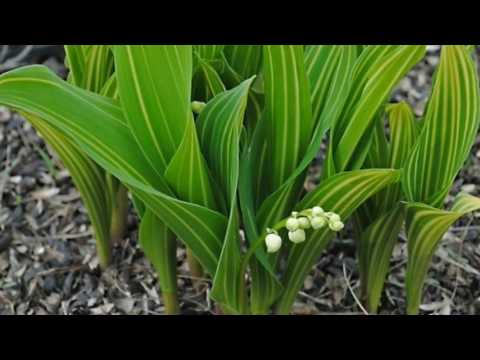

Watch this video on YouTube

